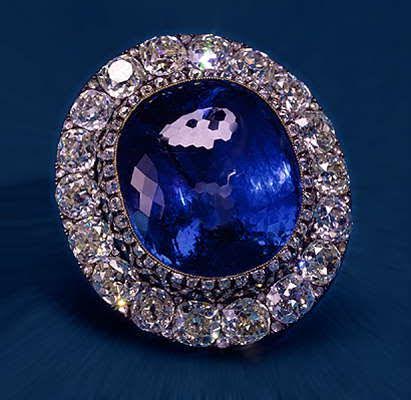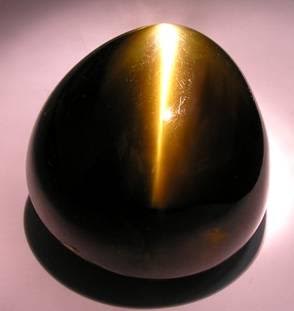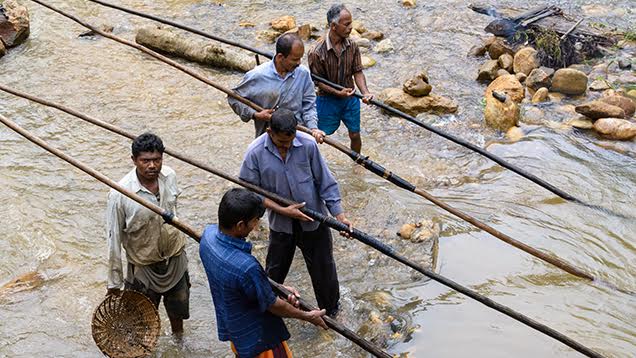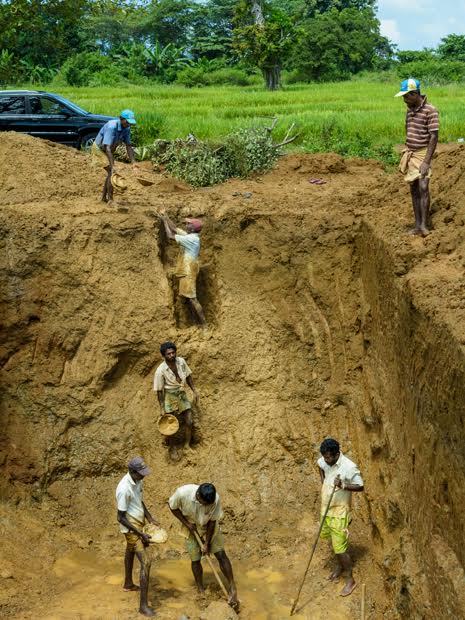As old as civilization itself the Sri Lankan Gem Industry currently ranks with those of Myanmar, Brazil, South Africa and Thailand as one of the world’s most prominent gem-bearing nations. Swathed in the myth, legend, religion and the occult of Sri Lanka, gemstones, precious and semi-precious, have enriched the island’s economy, culture and reputation since about the year 543 BC.
Gemstone mining in Sri Lanka is mostly from secondary deposits. The gravels yield sapphires, rubies, cat’s eyes and other chrysoberyls, spinels, garnets, beryl, tourmalines, topazes, quartz and many other gemstones. In Sri Lanka, gem-bearing gravels known as illam are some of the richest in the world. Blessed with geological conditions made up of the ideal blend of chemistry, heat, pressure, time and weathering, the island is a veritable nature-made gem laboratory. Besides the well-known Pangaea, which existed about 300 million years ago, there were several other supercontinents in the Earth’s early history, their assembly and break up cycle helped form most of the world’s gem deposits. A number of these cycles are linked to the formation of gems in Sri Lanka. Most of the country’s gem deposits are in an area known as the Highland Complex, extending northeast to southwest and containing high-grade metamorphic rocks.
Sri Lanka boasts a true mine-to-market industry, both domestically and for export. A fascinating aspect of this is the harmonious and productive blend of tradition, experience and modernization. Mining is done primarily by use of traditional methods, and is small-scale by choice and design as such mines are considered to be less harmful to the environment and a more stable source of employment for more people. Pit, river and mechanized are the three types of mining practiced in Sri Lanka. Manual labor is the primary method used in mining. The National Gem and Jewelry Authority is the regulatory body responsible for the issuance of mining licenses and ensures that all related processes are conducted according to the set standards and rules. The NGJA is particularly strict when it comes to the requirements for mechanized mining. This strategy fortifies the continuous employment of 60,000 to 70,000 gem miners.
Gem cutting (lapidary) is another area in the trade where the traditional meets the modern in Sri Lanka. Centuries of experience in cutting and polishing continue alongside new technology and design models. The time-honored art of reading rough and orienting stones is integrated with the growing demand of the global market for exact calibration, well-balanced proportions and high quality polish. Thus the Sri Lankan lapidary industry consists of a fascinating blend of high-powered techniques, utilizing some of the world’s greatest expertise in the orientation of rough, and a growing precision cutting and re-cutting sector that maintains the strictest of tolerances.
The trading sector combines knowledge and experience acquired over centuries with modern global business models and the latest trends and fashions. Today Sri Lanka is the proud producer of a number of famed gems such as,
The Blue Giant of the Orient
The Queen Marie of Romania Sapphire - purchased in 1921 by King Ferdinand I of Romania for his consort, Queen Marie.
The Logan Blue Sapphire
The Blue Belle of Asia
The Empress Maria Alexandrovna Sapphire – purchased at the Great London Exhibition in 1862 by Tsar Alexander II for his Tsarina.
The Bismarck Sapphire
The Star of India – one of the world’s largest star sapphires
The Star of Lanka
The Star of Bombay
The Rosser Reeves Star Ruby – the largest fine quality star ruby in the world
The Midnight Star Sapphire
The Eye of the Lion – this chrysoberyl cat’s eye is the largest cut example in the world
Hope Cat’s Eye – the biggest chrysoberyl cat’s eye in the world
The Star of Ceylon
The Star of Adam
The Maharani Cat’s Eye
And the sapphires and diamonds of Queen Emma of the Netherlands' sapphire parure tiara, as well as the blue Ceylon sapphire in Diana, Princess of Wales’ engagement ring that is now worn by the Duchess of Cambridge.
Approaching fast, the FACETS International Gem & Jewelry Exhibition is the perfect place to experience the Sri Lankan Gem Industry in all its glory.








